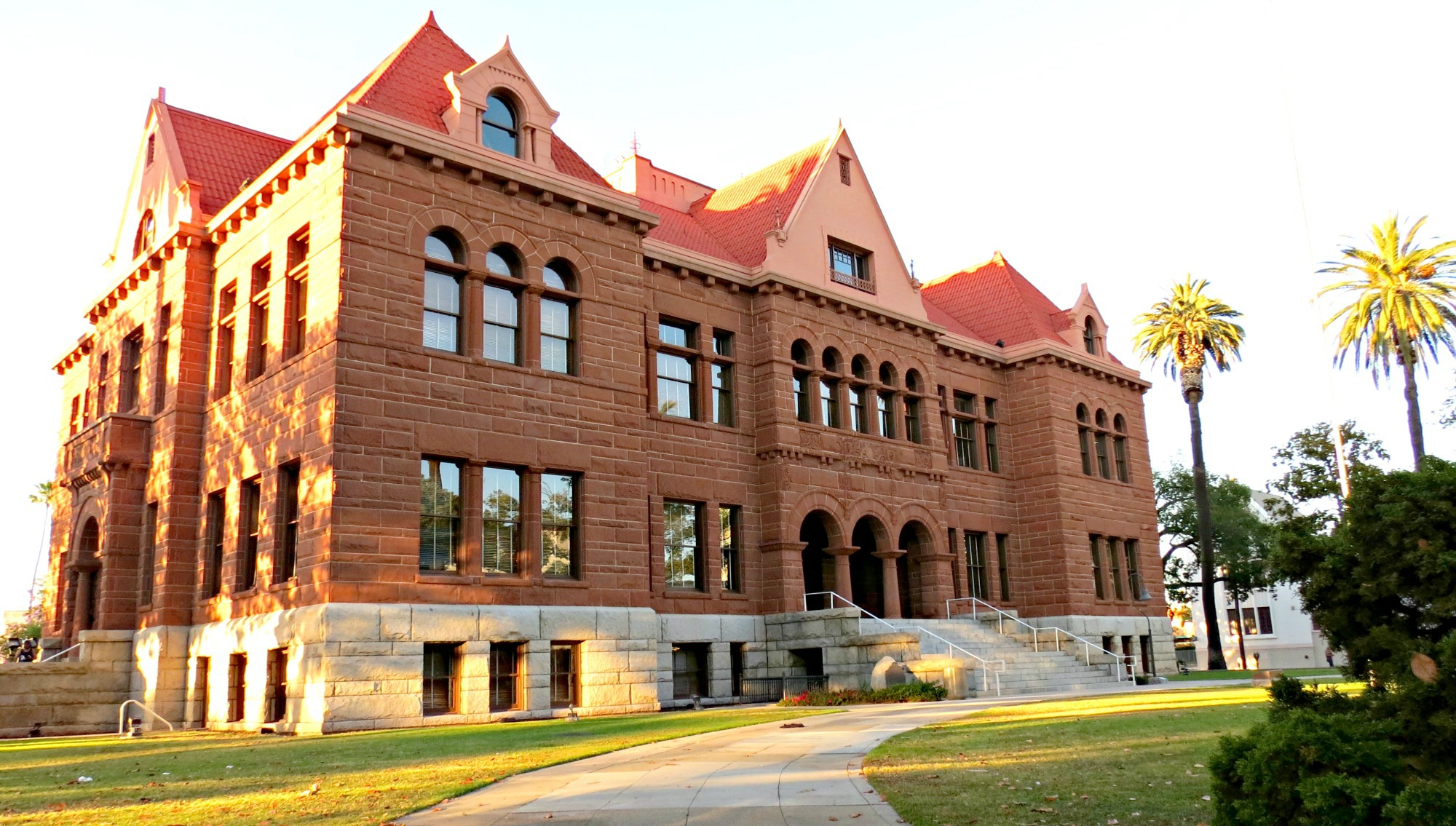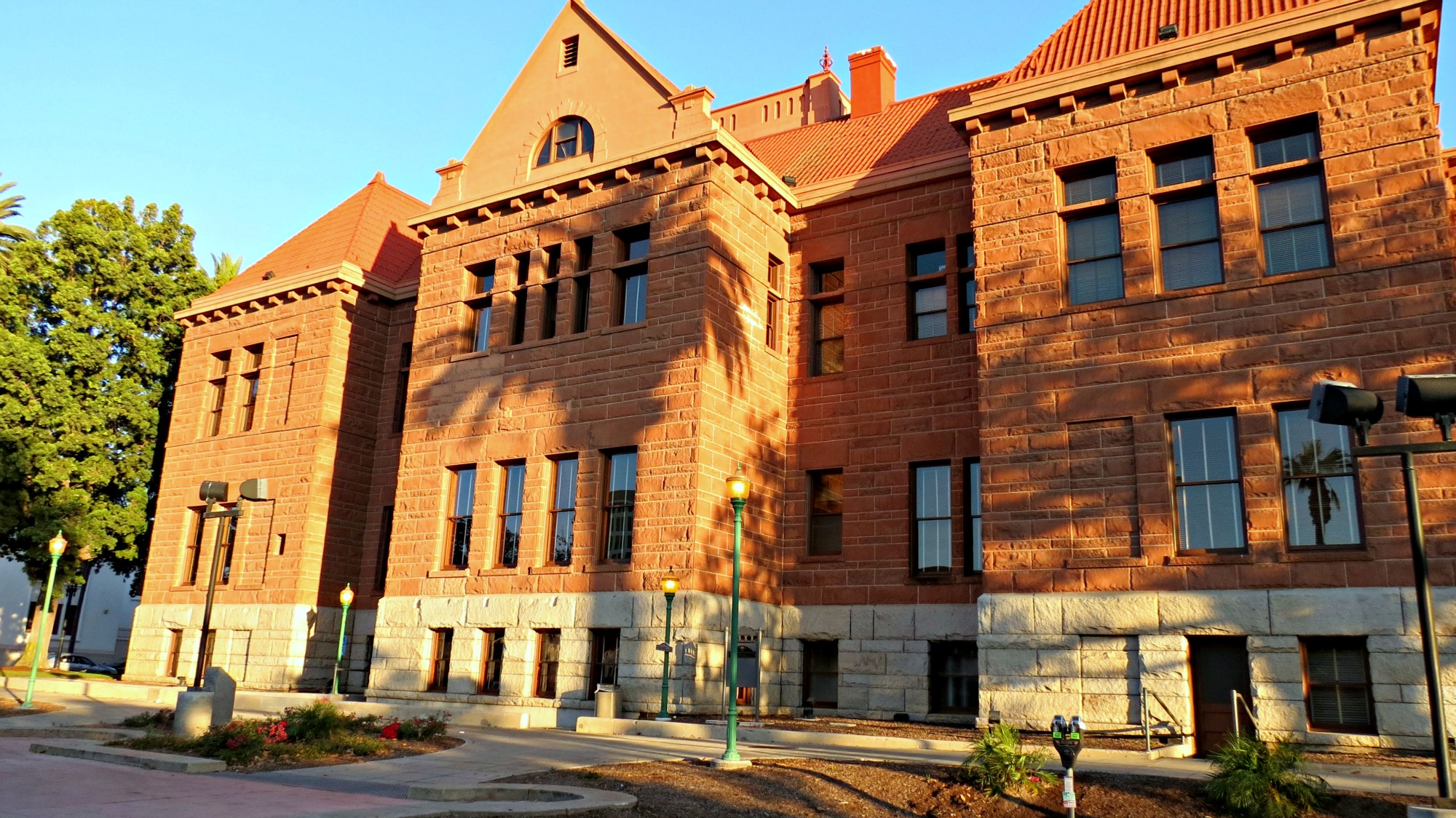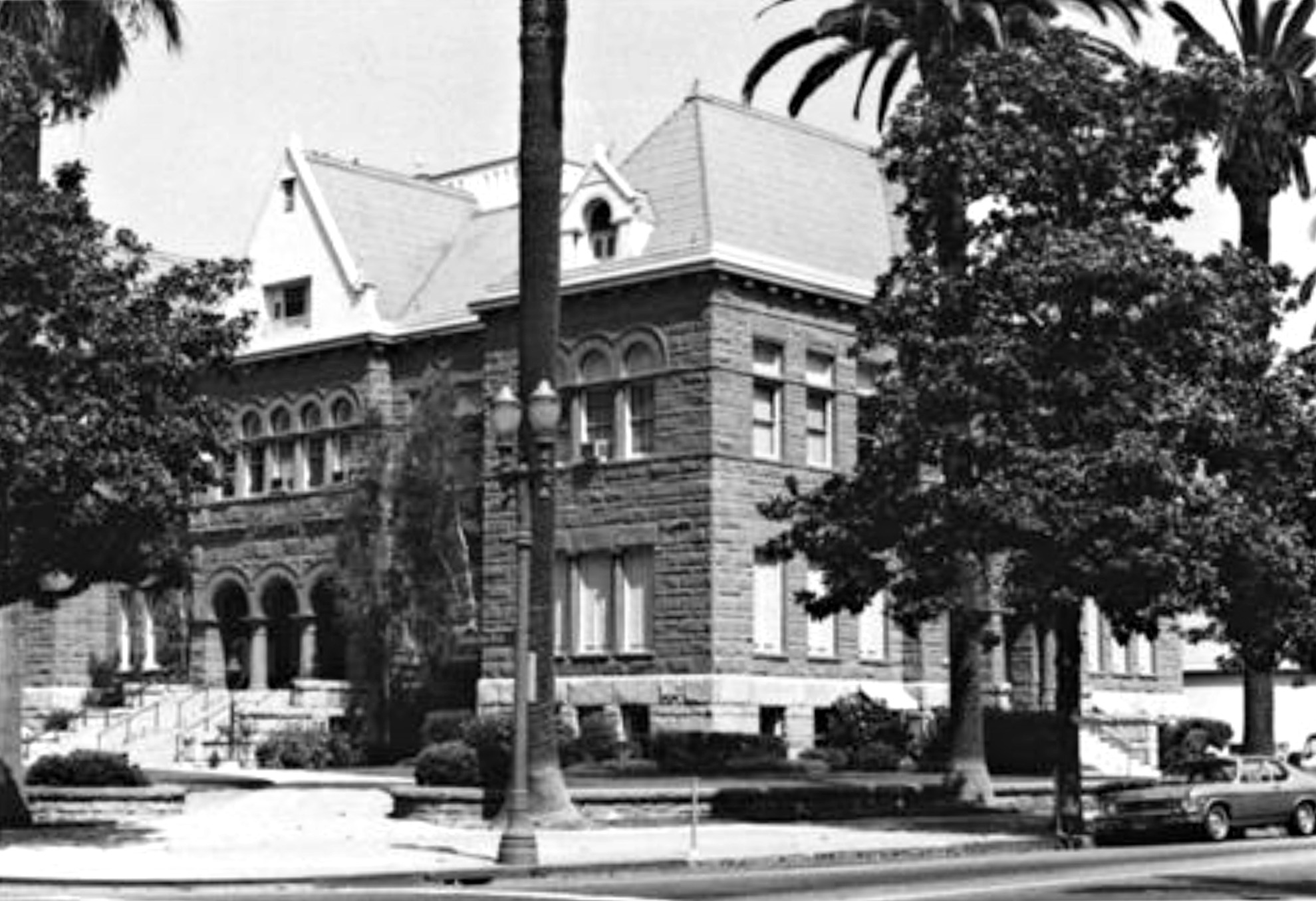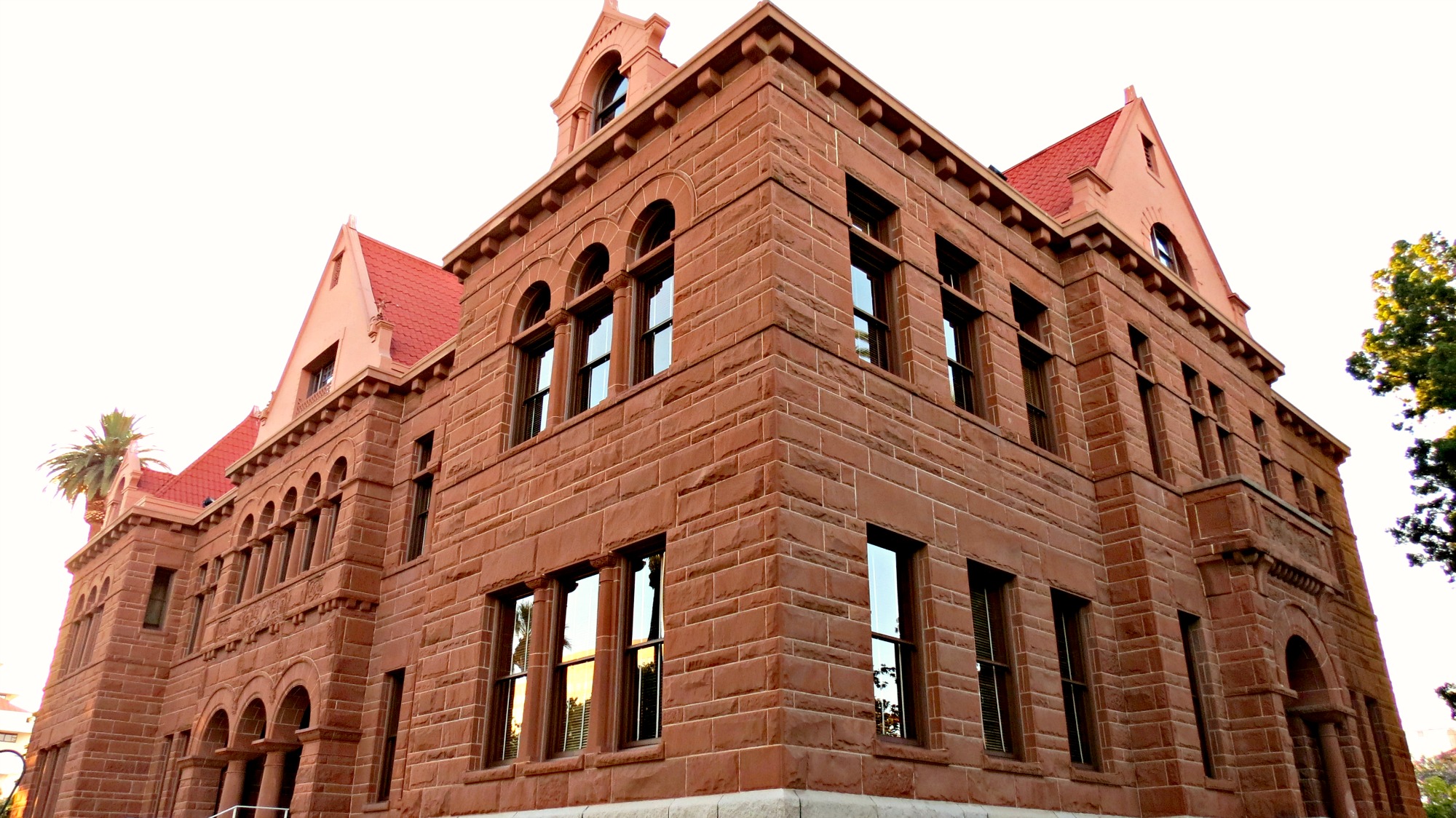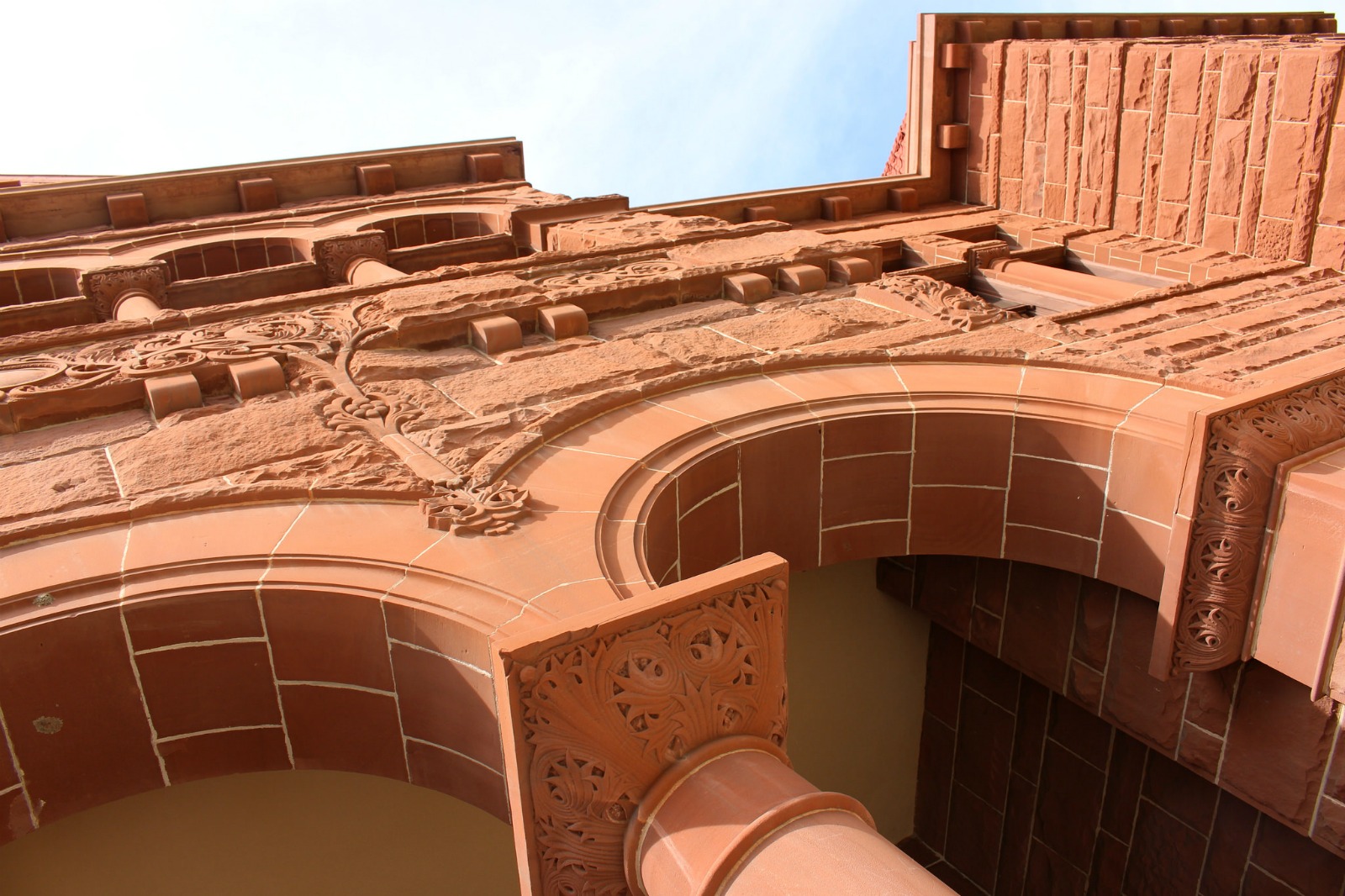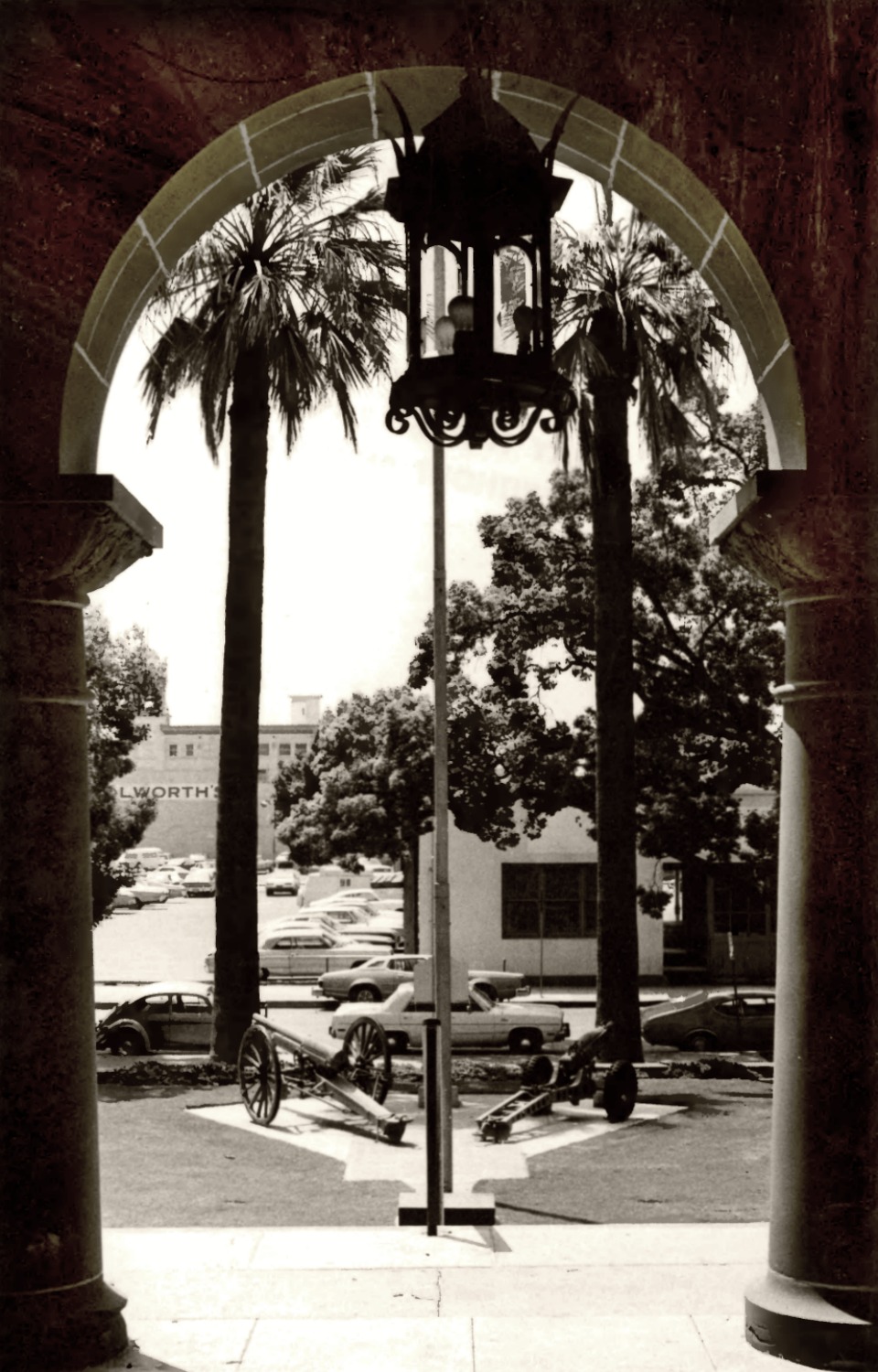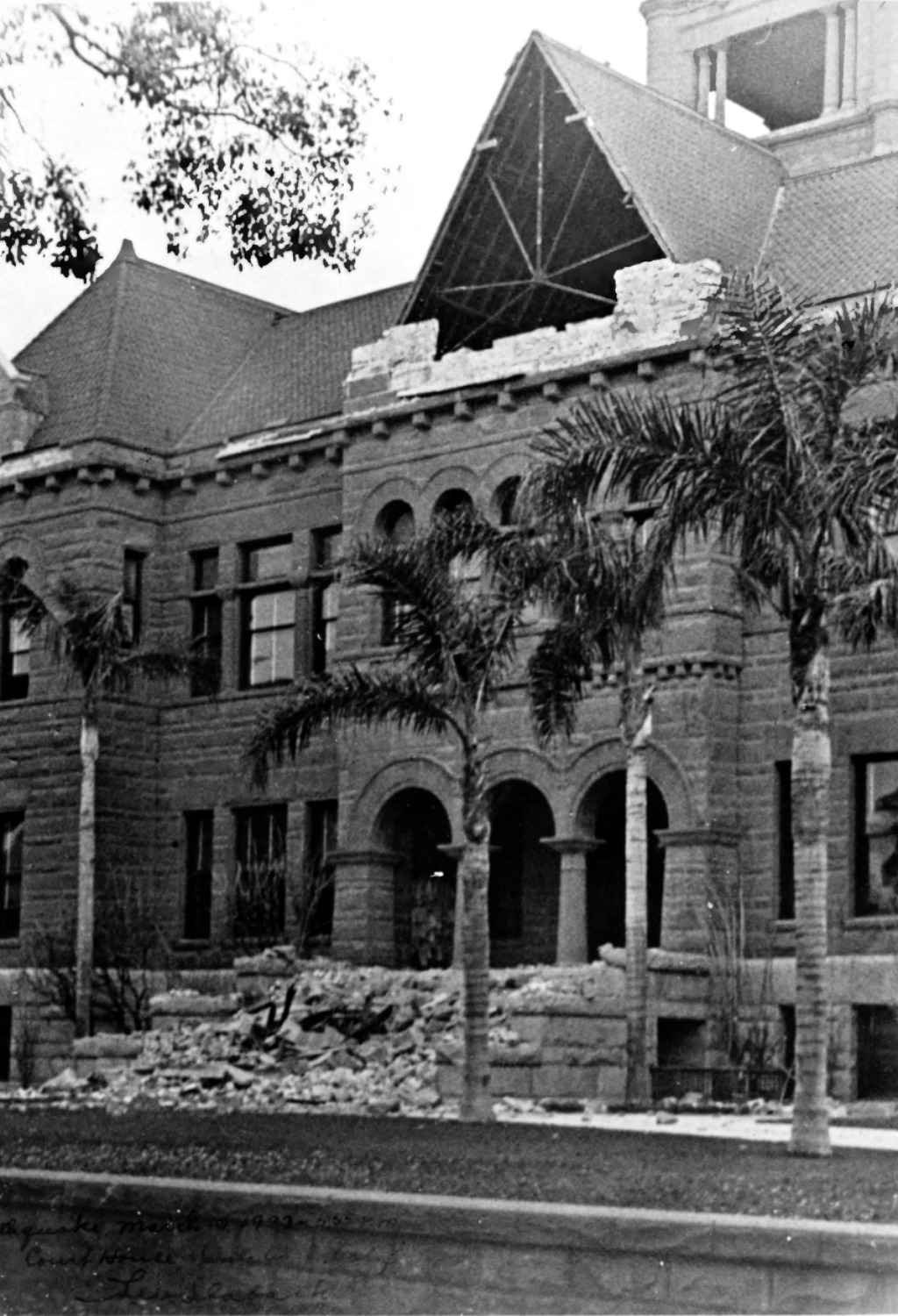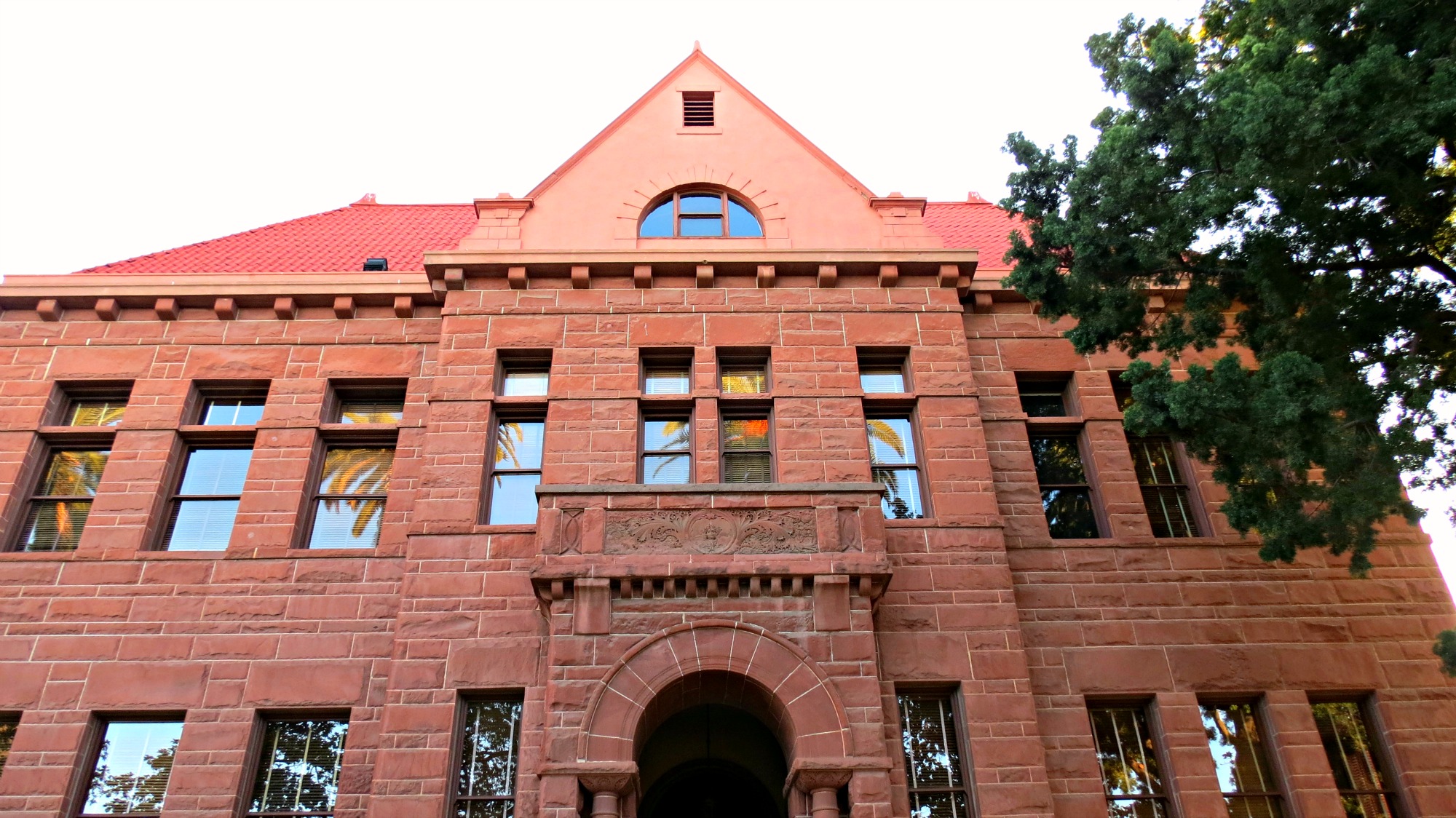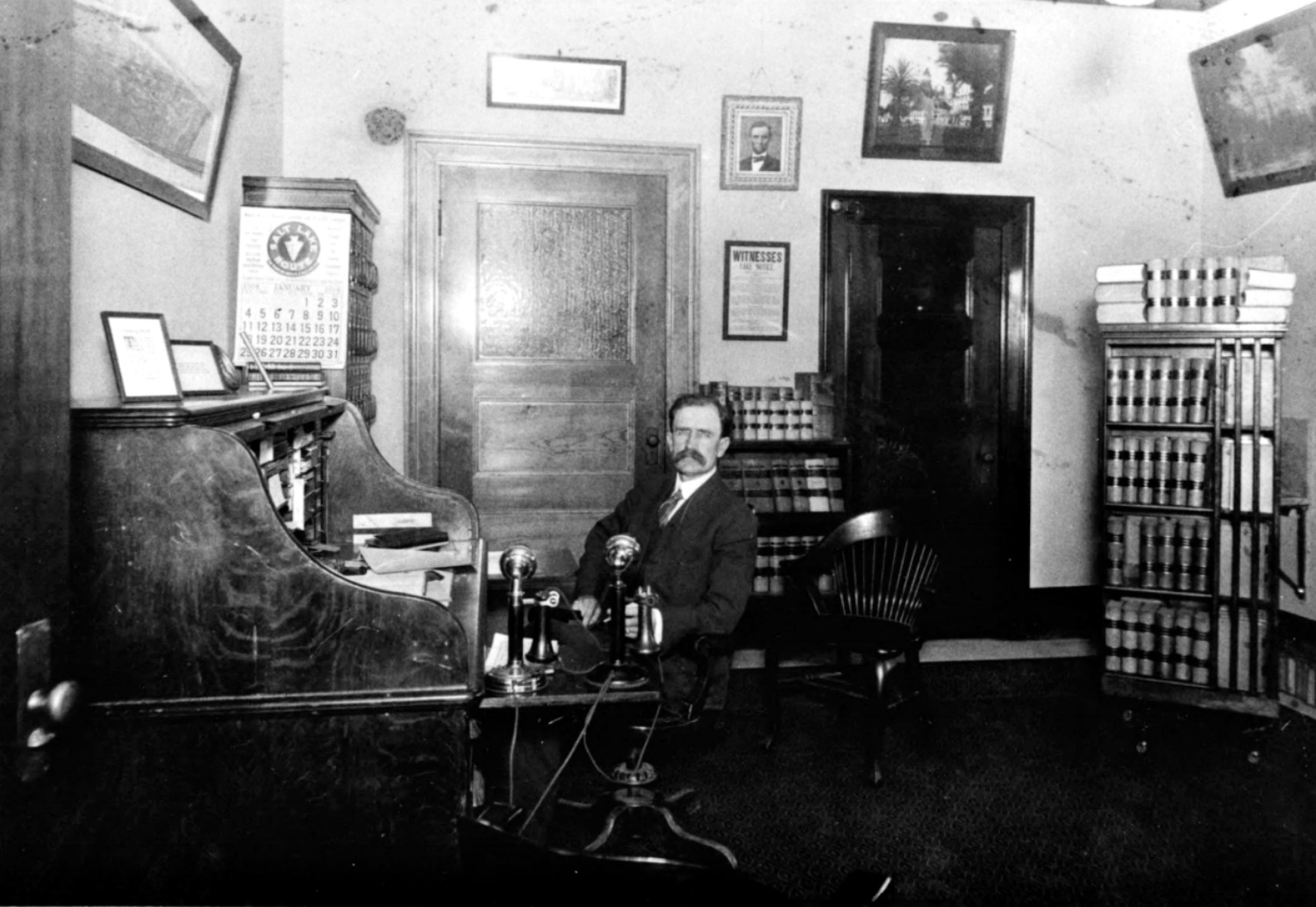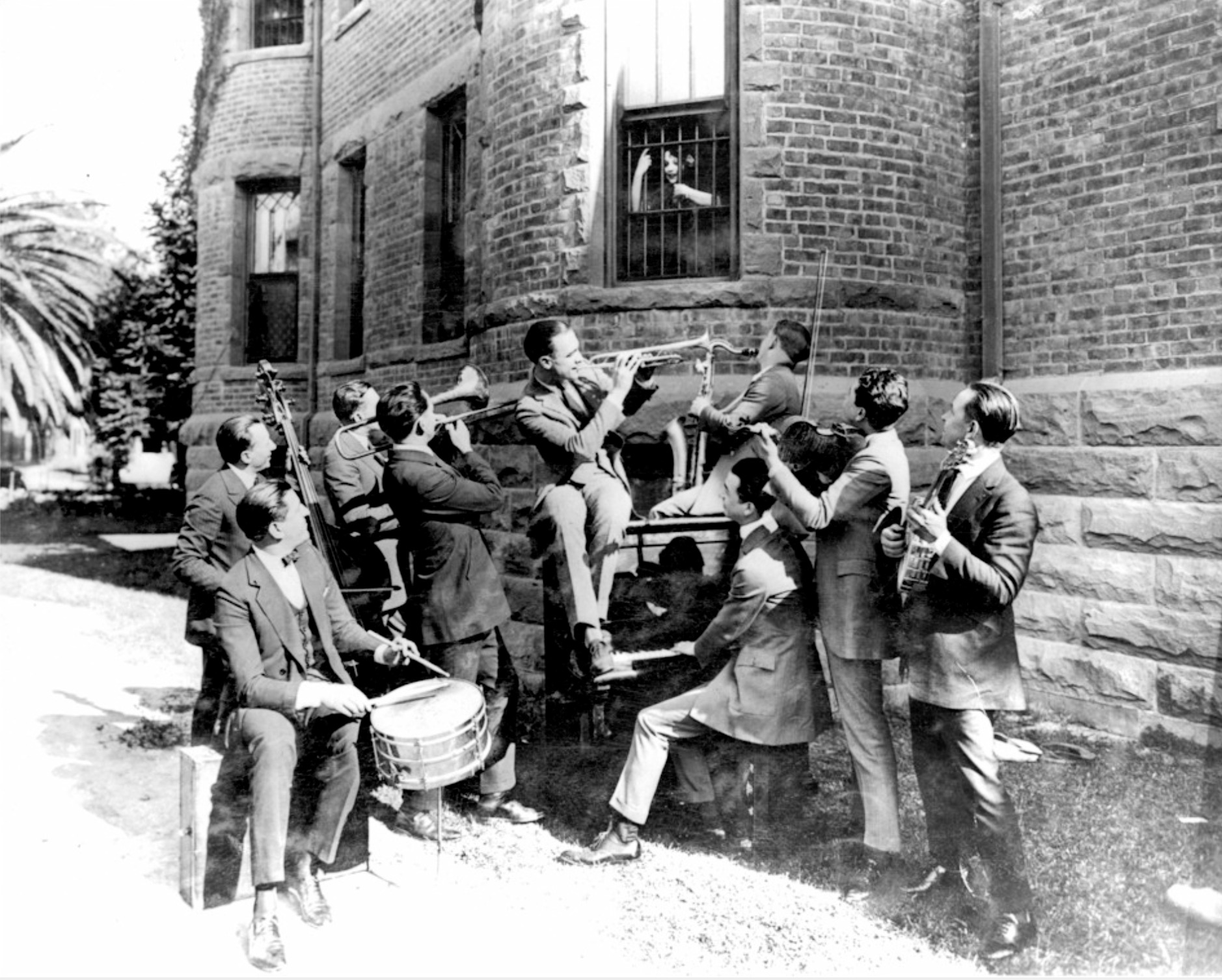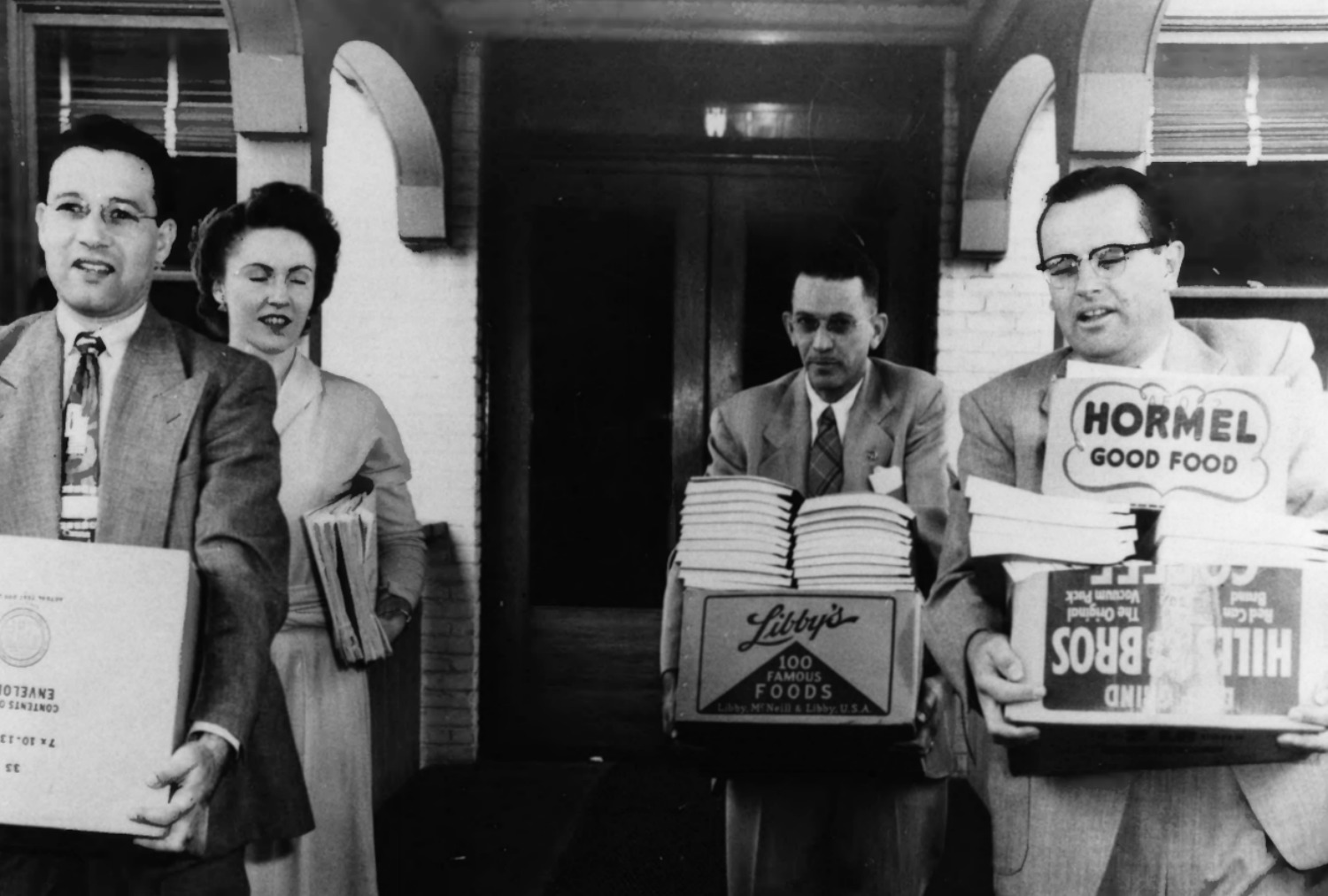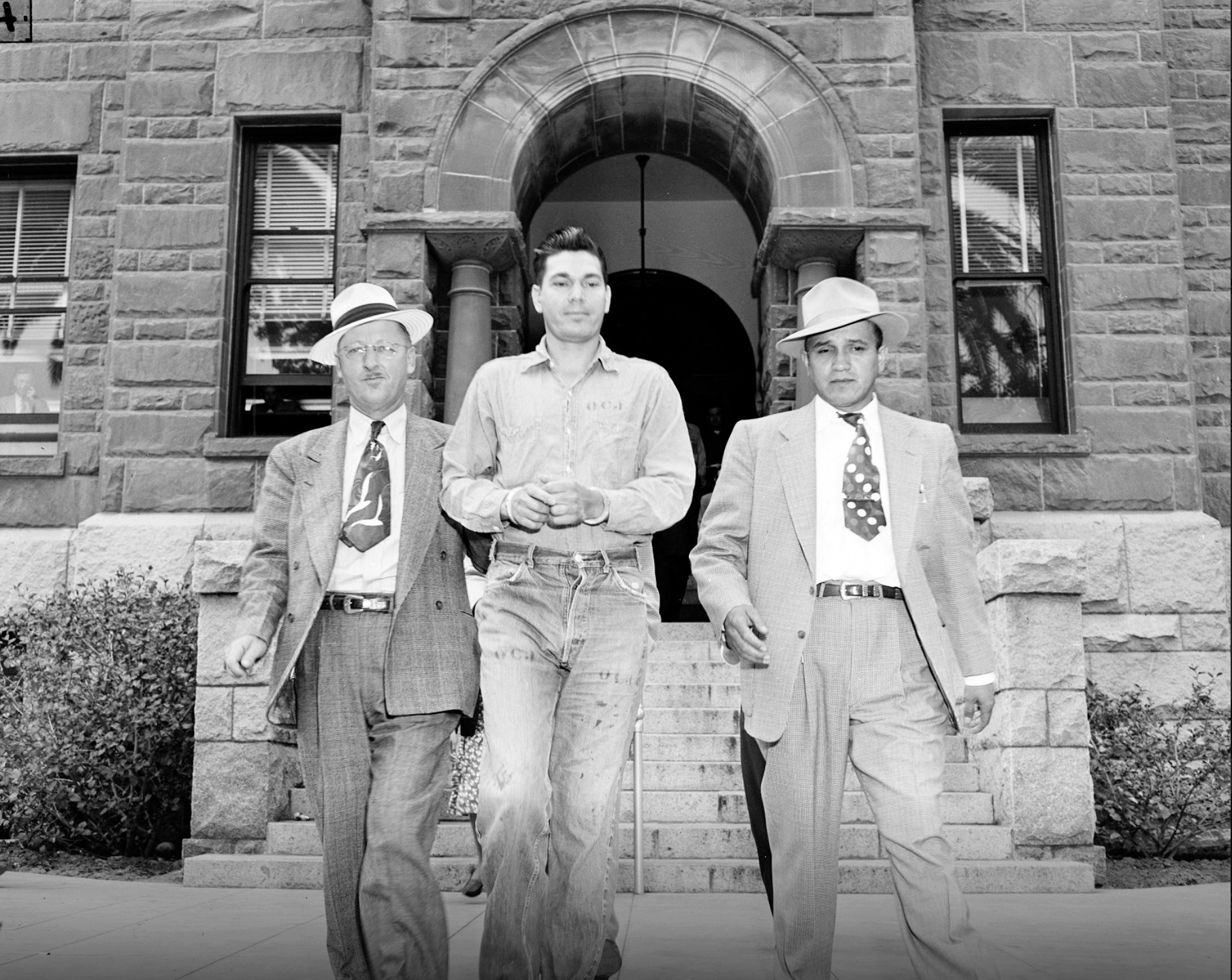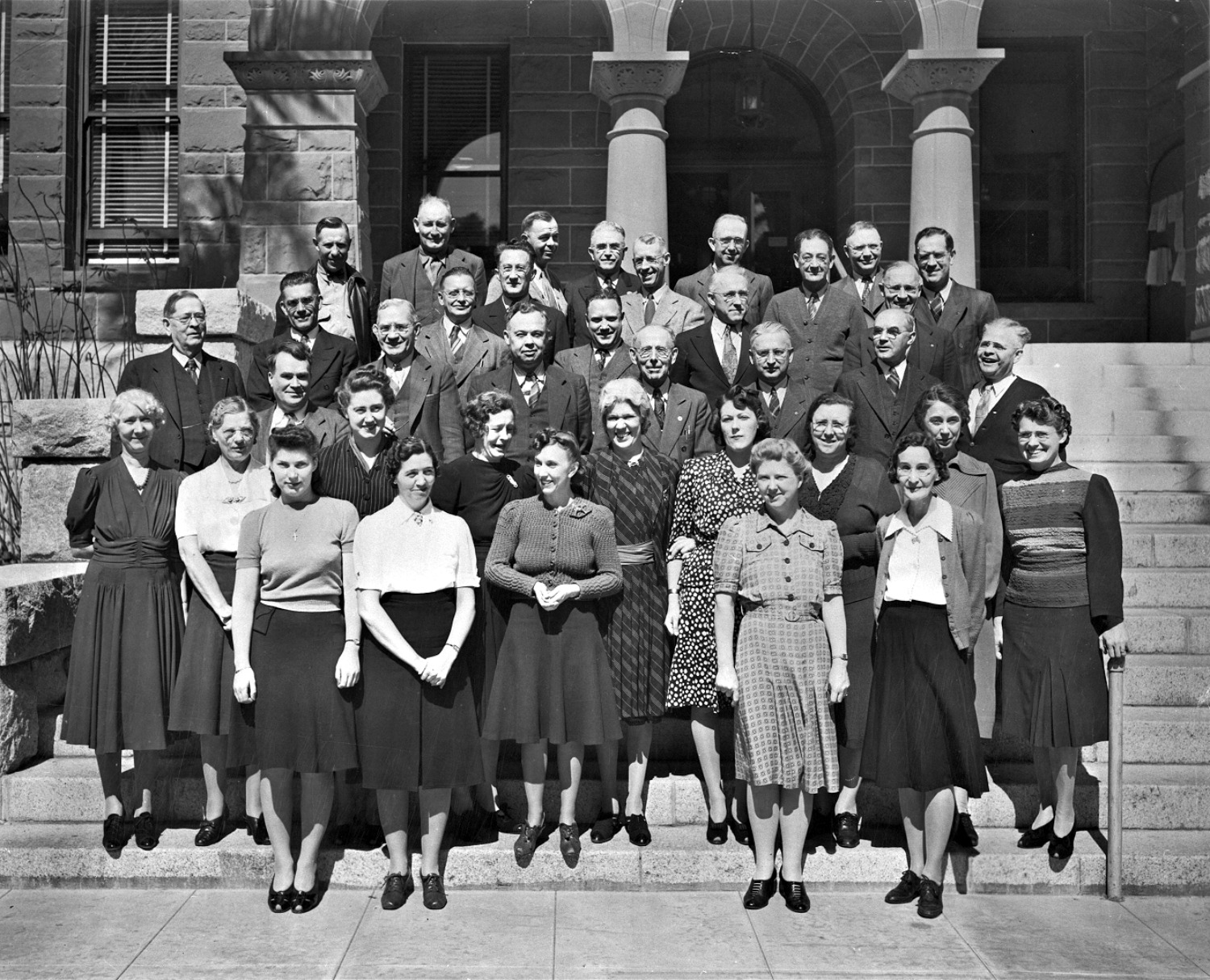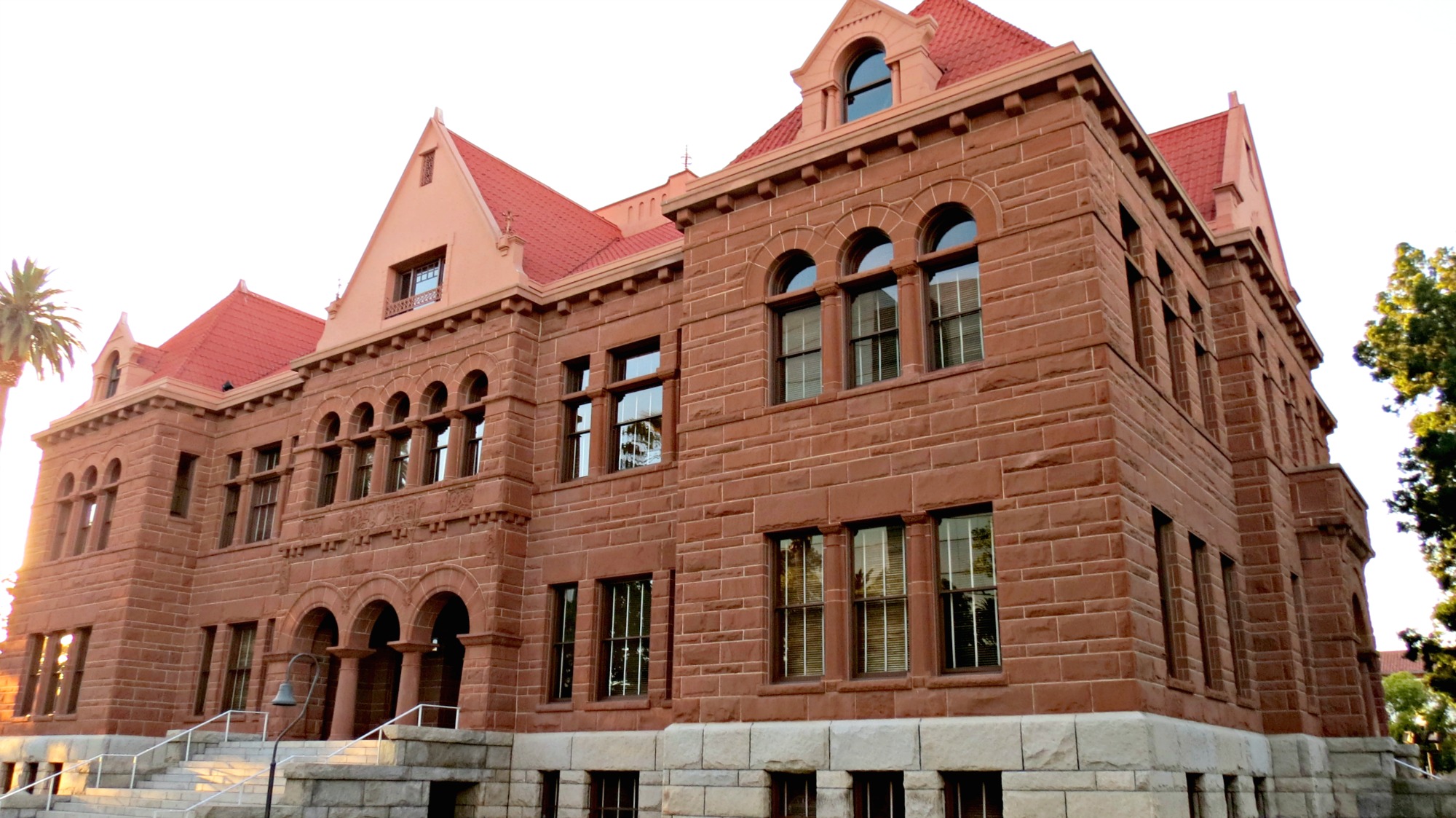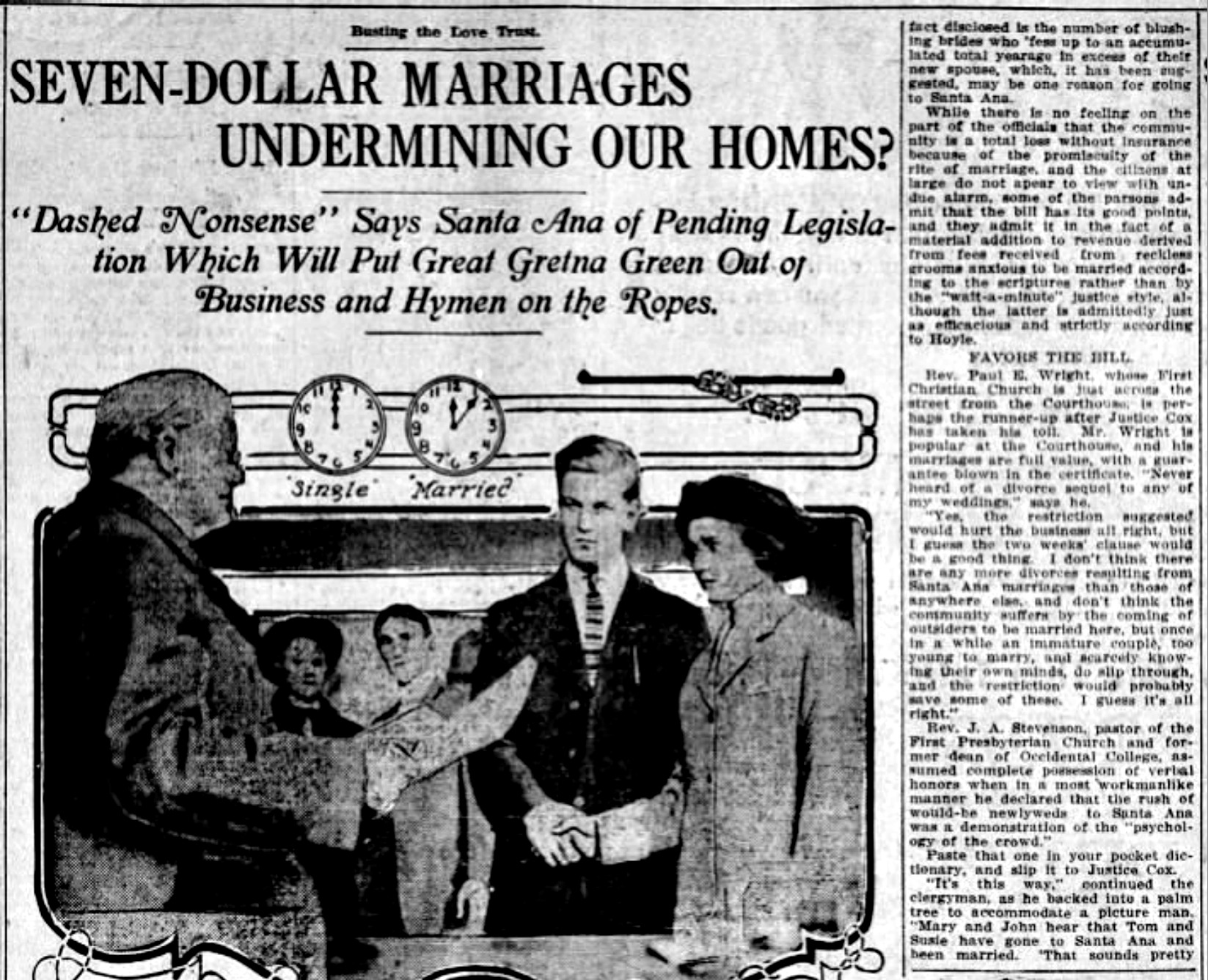Old Orange County Courthouse
211 West Santa Ana Boulevard, at Civic Center and Broadway, Santa Ana Downtown Historic District
Any building that’s nearly 120 years old is bound to have a storied past. But the incidents that have occurred inside and on the grounds of the Richardsonian Romanesque Old Orange County Courthouse in Santa Ana are as varied and colorful as its rustic red sandstone exterior.
In 1899, the southwestern portion of Los Angeles County was sliced into Orange County and Santa Ana became the county seat. The new board of supervisors bought a plot of land in 1893 for $8,000 from Santa Ana founder William H. Spurgeon on the condition that a courthouse be built within 10 years. First came a crudely built jail. With a deadline looming to construct a courthouse, the supervisors chose the design of Los Angeles Building Supervisor and architect Charles Lincoln Strange and hired builder Chris McNeill (the Balboa Pavilion). The ambitious Strange commissioned and was often credited as architect for Southern California buildings and projects such as Pasadena’s Hotel Green (with Frederick L. Roehrig and William McLean), LA’s Romanesque Central Police Station at First and Hill streets, numerous city schools, and a Los Angeles-to-Altadena electric railway.
Architectural Style
Richardsonian Romanesque, a form of Romanesque Revival, was popular at the end of the 19th century. Many mid-to-large-city government and institutional structures were built in the style; in the West, notable examples include Colorado College in Colorado Springs, San Antonio’s Bexar County Courthouse (architect James Riely Gordon), the Flagstaff City Hall, and the Los Angeles County Courthouse (Curlett, Eisen, and Cuthbertson), built on Poundcake Hill at Spring and Temple streets. Strange is said to have based his design for the Santa Ana courthouse on an Iowa Romanesque Revival courthouse, while its 63-foot-tall cupola was believed to be influenced by that of Boston's Trinity Church.
The symmetrical 2½-story Orange County Courthouse is set on a rusticated granite basement and features wide front steps that climb to an entry centered in a three-bay arcade. It faces south onto landscaped grounds with mature palms and polished cannons. The facade features five bays; the center and end bays raised and topped by steeply pitched gables with wall dormers. A slightly overhanging cornice accented with corbel blocks encircles the building. Bands of windows are flat-headed, arched, and recessed. Other distinguishing features include heavy, rock-faced stone; massive masonry walls; round arches; and a hipped and gabled metal roof that resembles tile. Materials were sourced locally: the Arizona sandstone was from a Santa Ana supplier, while the granite came from Temecula.
A Series of Events
Groundbreaking for the building made big news. On July 4, 1900, an estimated 8,000 gathered on the courthouse grounds for an Independence Day celebration and festivities surrounding the laying of the first cornerstone. Among the entertainers: "The Most Daring Aeronaut on Earth", Emil Markeberg, who dazzled the crowd on his trapeze, suspended by a hot-air balloon, before a planned parachute drop. As he'd done for 20 years, he swung, twisted, turned, and smoked a cigar. "I do my most active thinking when I'm up in the air...occupied in an ascension," he once told The San Francisco Call. A highlight of his act: hanging by his teeth. Suspended above Santa Ana, teeth clinching the parachute, a leather strap suddenly snapped and Markeman plunged an estimated 665 feet to his death.
The courthouse, which occupied an entire city block, was completed in November 1901 and for years was considered the most impressive building in Orange County. While the courthouse is historic and a rare and fine example of Richardsonian Romanesque, it’s also famous for what went down inside those halls of justice.
In 1921, coquettish film actress Bebe Daniels, 19, was sentenced to 10 days in a carpeted and furnished jail (with an extra bed for Mom) for speeding her Marmon roadster through Orange County streets at 56 mph. Daniels was serenaded outside her window by a band from the Cocoanut Grove. The incident only boosted her star power and Daniels' next film, The Speed Girl, was inspired by her experience.
Slant, whipstock, or directional oil-drilling cases at the court in the mid-1930s had a far-reaching impact in the industry.
In 1947, teen Beulah Overell and her boyfriend, Bud Gollum, were on trial for the yacht explosion and death of her parents in Newport Harbor. After a 19-week trial and two days of deliberation, they were found not guilty.
In 1951, the first court case televised in California--sparking the start of sensational television coverage--was for the murder of Patty Hull, 12, of Buena Park. Media and the public swarmed to the courthouse during the trial of suspect Henry Ford McCracken, a "hillbilly guitarist" and convicted child sex offender. Tests at USC to prove him insane failed and the initial trial ended in a deadlock and mistrial. The second trial found McCracken guilty. He was executed in the gas chamber at San Quentin in 1954.
On a lighter dramatic note, the courthouse has been used for theatrical purposes and location shoots since 1915. “It’s looked old since the day it was built,” quipped historian Jim Sleeper in a 1980 article in The Los Angeles Times. A play, The Bellamy Trial, was staged in the courthouse in 1935 and included four actual attorneys in its cast. The courthouse can also be seen in the films Frances, Catch Me If You Can, and Legally Blonde. In 2012, It became Briarcliff Manor, a former tuberculosis hospital-turned-insane-asylum, for FX’s American Horror Story: Asylum.
Upon completion in 1901, the courthouse was considered the most impressive building in the county. The cupola was removed as a precaution after the 1933 Long Beach earthquake damaged many buildings in the vicinity. Staff vacated the structure in 1969 for a new 11-story facility on Civic Center Drive in Santa Ana. The Old Courthouse is a State of California Historical Landmark and in 1977, it was listed to the National Register of Historic Places, but closed two years later after it was declared an earthquake hazard. A multi-phase seismic rehabilitation and restoration began in 1983 and was completed in 1992. Restored to look like it did in the early 20th century, the 30,000-square-foot building is the oldest existing county courthouse in Southern California. It currently houses the Orange County History Center and is open for tours. Since the early 1900s, it has been a popular site for weddings.
Architect Strange
Back to the original architect, LA Building Supervisor Charles L. Strange. Oddly, he never made it to the July 4 groundbreaking event and likely never saw his design after completion. While Mrs. Charles Strange was documented in the Times' social pages enjoying "dainty suppers" with her sister Chrysanthemum Club members in 1898, by June 1900, in an article headlined "He Will Not Return", the newspaper reported that the couple had "parted". Charles Strange took his business affairs to Guadalajara. In 1908, as Carlos L. Strange, he wed Maria Isabel Garcia. The couple and their two children sailed to Panama and then to San Francisco that same year, according to archival records. Although Strange made his way back to Los Angeles, he died in October 1908.
Archival photos courtesy of Orange County Archives; exterior detail by Chris Jepson; current images, L.H. Taylor

